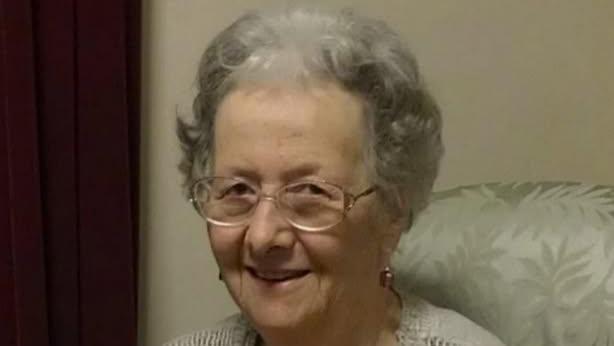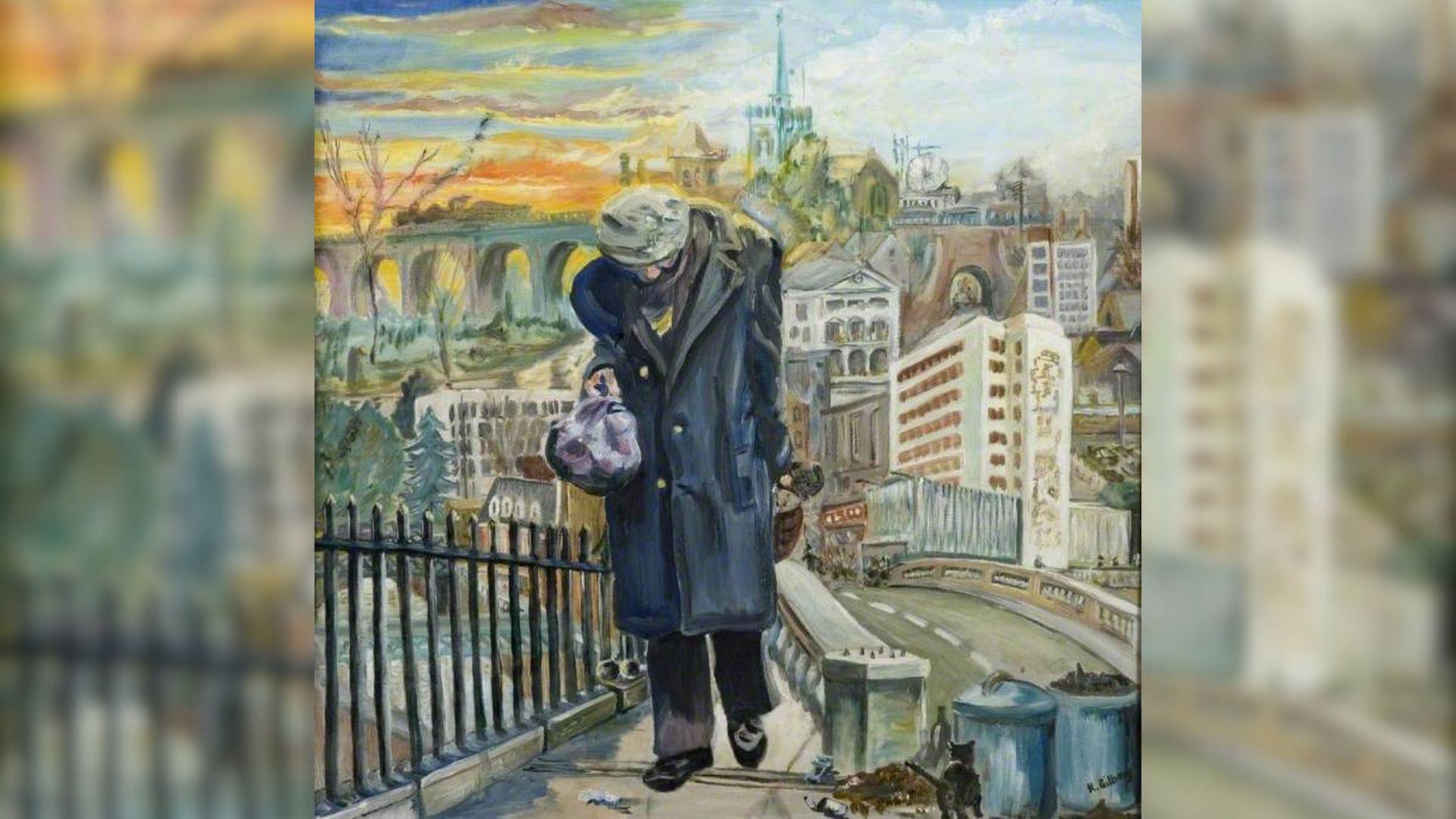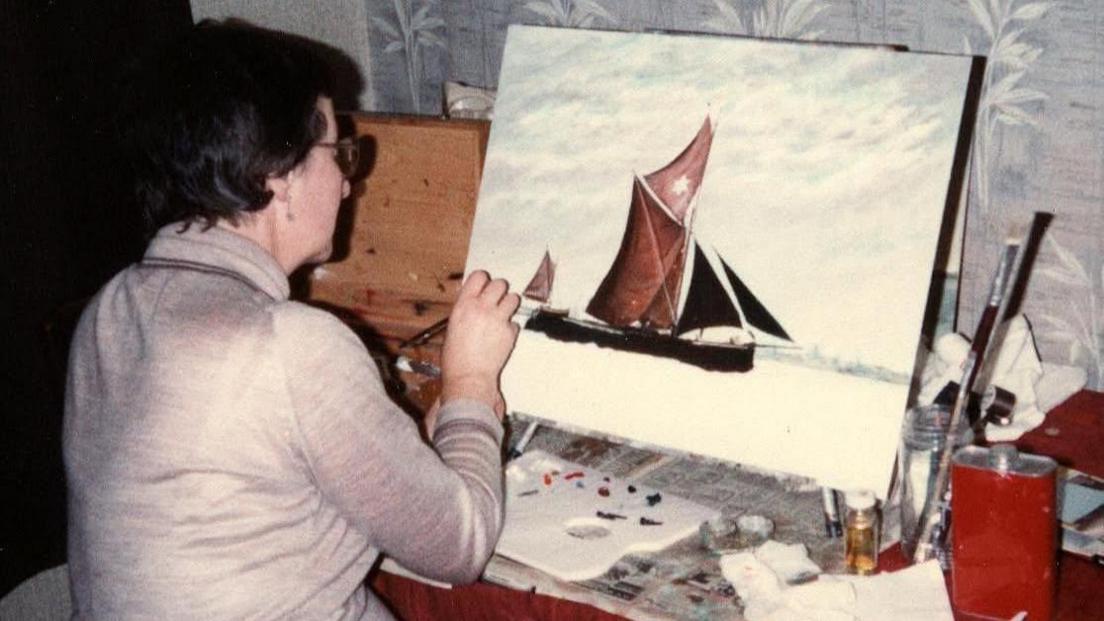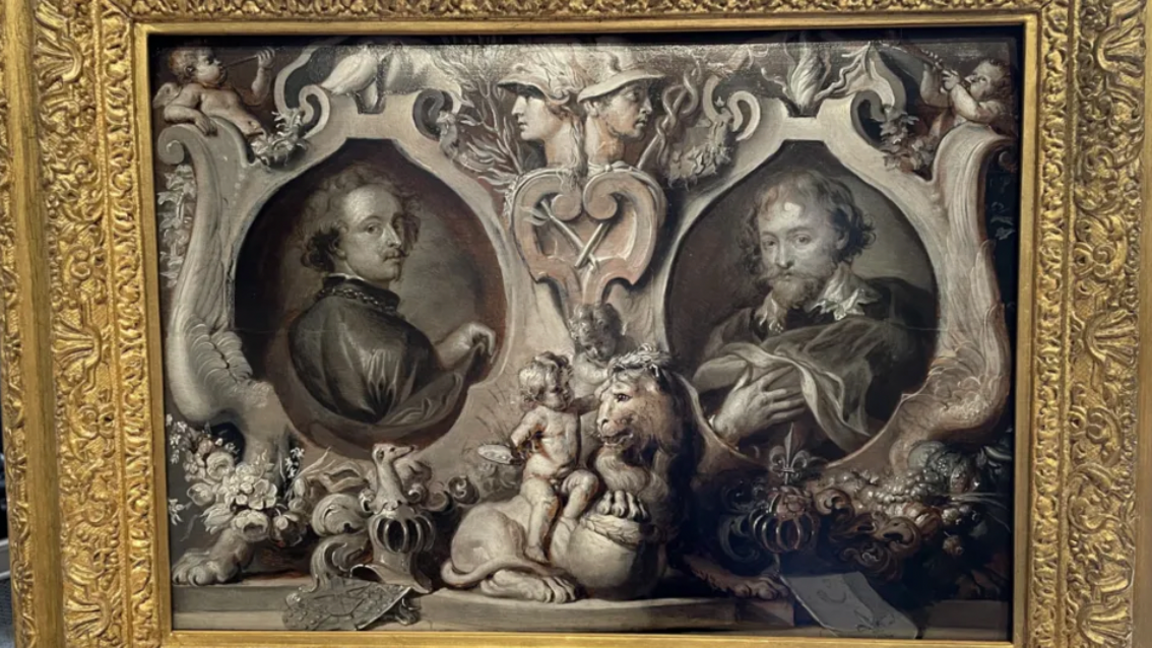Son 'proud' after mum's painting resurfaces

Painter Kathrine Gilbey died in 2024
- Published
A man whose late mother donated a painting to a museum said he felt "immensely proud" to see it resurface more than 50 years later.
David Gilbey noticed the painting by Kathrine Gilbey had been posted on social media, external by Chelmsford Museum, which was looking for information about the artwork before featuring it in an exhibition.
The post attracted the attention of several locals who recognised the figure depicted walking through the city as a man known locally as Bundles.
Mr Gilbey, who was alerted to the post by a friend, said it was "a little bit of a surprise" to see his mother's work emerge online.

Kathrine Gilbey donated the painting of a homeless man walking through Chelmsford to the city's museum in the 1970s
Mr Gilbey said his mother, who died last year, was "just a normal everyday housewife" who started painting to keep herself busy as her children got older.
"She decided to do something for herself and leave a legacy," he said.
In a note left with the painting when it was donated to the museum in the 1970s, Mrs Gilbey wrote: "This painting of an elderly man who was often found wandering the streets of Chelmsford typifies my concern for the homeless.
"Most of what I know about Bundles is hearsay; that he walked the streets of Chelmsford for about 60 years after his mother's death."

Kathrine Gilbey started painting as a hobby as her children grew up
Museum curators were keen to find out more about the artist after her painting was selected by people living with dementia to feature in a new exhibition.
The painting, thought to have hung in a local solicitor's office for many years, will be on show at Chelmsford Museum from March.
Claire Willetts, the museum's curatorial and learning officer, said the exhibition featured all-female artists.
"When I discovered that twice as many women have Alzheimer's disease – the most common type of dementia – compared to men, this theme of female artists became even more valuable," she said.
"It became an opportunity for us to raise awareness of these troubling statistics as we work with those directly affected by dementia."
Get in touch
Do you have a story suggestion for Essex?
Follow Essex news on BBC Sounds, Facebook, external, Instagram, external and X, external.
Related topics
You may also like
- Published28 August 2024

- Published16 November 2024
